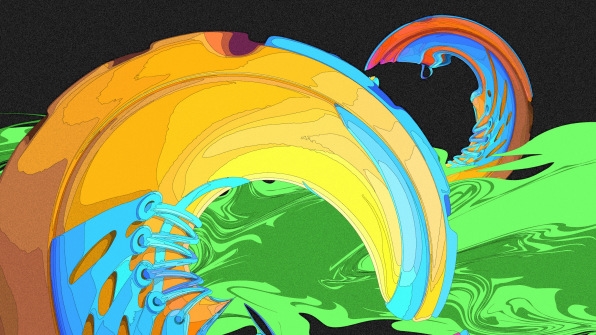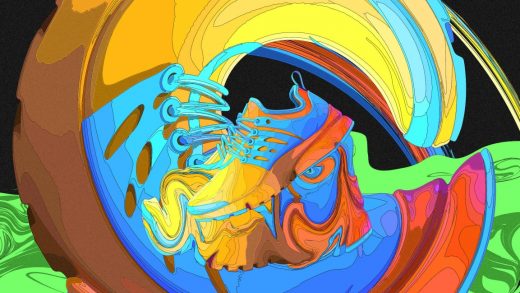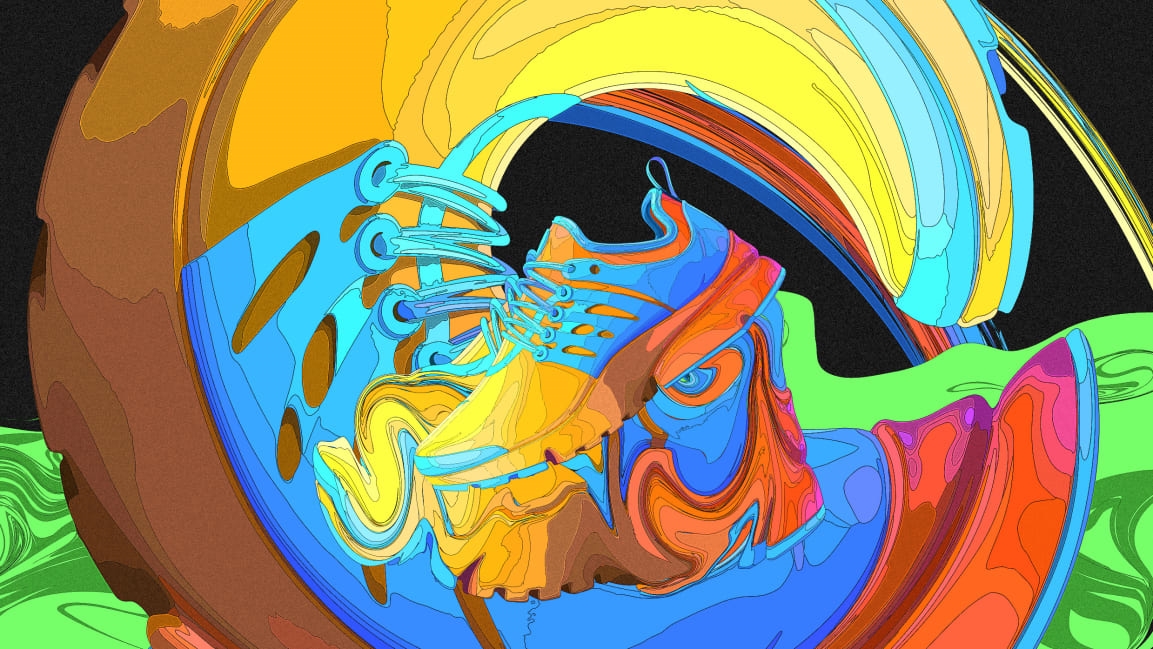Scientists develop a truly recyclable plastic. Is the world ready for it?
The average American generates 220 pounds of plastic waste each year. A vast majority of it is not recycled, even if you send it to a recycling facility. Most plastic ends up in a dump.
There are all sorts of reasons for this. Some recycling facilities don’t have the technology to sort plastic correctly. And for companies, it’s actually cheaper to make “virgin” plastic than to produce recycled plastic. Recycled plastic is far from perfect anyway. Generally produced by melting down old plastic, recycled plastic actually needs virgin plastic mixed in to keep its structure. An estimated 91% of all plastic isn’t recycled at all.
But researchers from Lawrence Berkeley National Laboratory and the Department of Energy have been studying an enticing, new type of plastic. Called polydiketoenamine, or PDK, it’s an infinitely recyclable material. Literally 100% of it can be reclaimed and reshaped into a new plastic item as many times as a company could want.
How could a new plastic be better than old plastic? Our traditional plastics, such as polypropylene milk jugs and nylon stockings, were developed in the 1930s to be cheap and easy to mass-produce out of byproducts from the oil industry. Through that lens, they were miraculous, and they enabled breakthroughs in consumer products, from squeeze bottles to Tupperware. The problem is that nearly 100 years later, this miracle material is completely embedded in everything we make and do—and it’s killing the planet. Realistically, we can’t eliminate plastic from the supply chain, and even if we did, that wouldn’t solve the world’s climate crisis. Even more-organic materials, such as cotton, are a drain on natural resources. Which is why many experts are making a pitch for recycling to be easier—be it through the materials themselves, or recycling facilities, or ideally, both.
“The idea here is that we’re designing new polymers with ease of recycling in mind,” says Corinne Scown, staff scientist and deputy division director at Lawrence Berkeley National Lab.
Plastics are chains of identical molecules called monomers, which link together into the polymers we know as plastic. Additives can enter the mix, from dyes to flame retardants to customize the material for different purposes. So when you try to recycle plastic by melting it down, all the distinct substances mix together inseparably.
“[Today] melting a plastic down that has all kinds of fillers . . . that stuff is all going to stay in there,” says Scown. “Of course you’re going to have a degraded product at the end of that process.” And since you have a degraded material, manufacturers add in virgin plastic to make the product stronger. Even Adidas’s cutting-edge Loop shoes, which allow the company to melt an old pair into a new pair, require virgin plastics to be added to the mix. Along the same lines, Everlane, which is trying very hard to eliminate virgin plastic, hasn’t found adequate replacements for items such as zippers and spandex. The degradation of recycled plastic is a big reason why.

However, PDK plastics are manufactured in such a way that they can be melted down, not by heat, but by acid. This acid process is more controllable. It cleanly separates the monomers from additives. And all of those monomers can be reused in the next batch of plastic. Scown’s team actually demonstrated, using advanced simulations, that this approach could work at scale. Without heat, the process is less carbon-intensive than recycling typical plastic. And it allows more plastic, period, to be reclaimed.
So could PDK replace all of our other plastics? Probably not, from a practical sense. To produce a virgin batch of PDK with current methods costs roughly 10 to 20 times more than regular plastics, largely because that process hasn’t been honed to scale with optimal efficiency yet, according to Scown. Also, its initial carbon footprint is actually worse due to a few specialized chemicals needed for the process. However, over time, as a product is recycled again and again, PDK makes more sense. A key metric Scown discovered is that it is cheaper to recycle PDK even just once than it is to produce a new piece of typical virgin plastic.
“There’s still a lot of testing to be done to understand what applications, packaging, and durable product applications this is good for, and how we might tailor new monomers in the future to get the specifications we want,” says Scown. “It’s not like this is going to replace all plastics tomorrow. There will be some applications where it works and others where it doesn’t in its current form.”
In other words, single-use plastics—such as plastic bags—that currently end up in our waste stream might not make sense as PDKs. These bags would be more expensive to produce in a low-margin industry. And without an infrastructure to collect them for recycling, the financial and environmental cost for producing PDK bags would be higher. “So, like, maybe don’t make potato chip bags. Don’t make plastic film,” says Scown. “Instead, you might want to make a durable product, maybe one that has a take-back program in place, or a product that’s more a rental or service model, as opposed to ownership.”
Indeed, look at products with a higher sticker price that a company is hoping to recycle—such as shoes—and PDKs suddenly make a lot of sense, since the material cost of plastic is a very small part of the overall price of the shoe. “As long as you can get it in products that make sure you recover the vast majority of that material to recycle many times over and over again, you’re in good shape,” says Scown. “Over the lifetime of the plastic, many recycling cycles, you’re approaching a cost similar to the plastics we have now.”
As of now, researchers are seeking out private companies that might want to partner up to test PDKs on a wider scale, while they continue to prove out the technology and optimize how it can scale beyond the lab.
(38)



